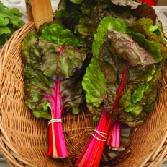-
CATEGORY ::
- All Seeds /
- All Flower Seeds



Asparagus Pea Vegetable Seeds
SEASON
Annual
USDA ZONES
6 - 10
HEIGHT
20 inches
BLOOM SEASON
Summer
BLOOM COLOR
Red
ENVIRONMENT
Full sun
SOIL TYPE
Well drained garden soil, doesn't need to be rich
DEER RESISTANT
No
HOUSE PLANT
No
SEASON
Annual
USDA ZONES
5 - 10
HEIGHT
8 inches
WIDTH
30 inches
BLOOM SEASON
Mid spring to early fall
BLOOM COLOR
Yellow with white edge
GROWTH RATE
Fast
ENVIRONMENT
Full sun
DEER RESISTANT
Yes
LATIN NAME
Limnanthes douglasii
SEASON
Annual
USDA ZONES
3 - 11
HEIGHT
120 inches
BLOOM SEASON
Spring to fall
BLOOM COLOR
Purple
ENVIRONMENT
Full sun to partial shade
SOIL TYPE
Rich, loamy soil, pH 5.5 - 6.5
DEER RESISTANT
No
SEASON
Perennial
USDA ZONES
7 - 11
HEIGHT
28 inches
BLOOM SEASON
Spring to fall
BLOOM COLOR
Rosy purple
ENVIRONMENT
Full sun to partial shade
SOIL TYPE
Well drained soils, pH 6.6 to 7.5
DEER RESISTANT
Yes
SEASON
Perennial
USDA ZONES
7 - 11
HEIGHT
4 inches
WIDTH
12 - 18 inches
BLOOM SEASON
Early spring to early fall
BLOOM COLOR
Pink
ENVIRONMENT
Full sun to partial shade
FOOT TRAFFIC
Light
DEER RESISTANT
Yes
SEASON
Annual
USDA ZONES
3 - 11
HEIGHT
100 - 140 inches
BLOOM SEASON
Late spring to late summer
BLOOM COLOR
Mix
ENVIRONMENT
Full sun
SOIL TYPE
Well drained, pH 6.6 - 7.5
DEER RESISTANT
No
HOUSE PLANT
No
SEASON
Annual
USDA ZONES
4 - 9
HEIGHT
12 inches
BLOOM SEASON
Late summer to early fall
BLOOM COLOR
Mix
ENVIRONMENT
Full sun
SOIL TYPE
Moist, well-drained, pH 6.6 - 7.3
DEER RESISTANT
Yes
SEASON
Perennial
USDA ZONES
9 - 11
HEIGHT
120 inches
BLOOM SEASON
Mid summer to late fall
BLOOM COLOR
Orange, red, yellow
ENVIRONMENT
Full sun
SOIL TYPE
Sandy, well drained soil, pH 5.5 - 7.5
DEER RESISTANT
Yes
LATIN NAME
Mina lobata
About...
Asparagus Pea (Tetragonolobus Purpureus) - Asparagus Pea seeds can grow one of the prettiest vegetables on the face of the earth! It is an herbaceous annual that is native to the Mediterranean region of southern Europe. It is a common spring-blooming wildflower in field and scrub.MORE FLOWER OPTIONS
Planting Directions
TEMPERATURE
65 - 70F
AVERAGE GERM TIME
10 - 21 days
LIGHT REQUIRED
Yes
DEPTH
1/4 inch
SOWING RATE
1 - 2 seeds per plant
MOISTURE
Keep seeds moist until germination
PLANT SPACING
4 inches apart in rows 12 inches apart
Asparagus Pea (Tetragonolobus Purpureus) - Asparagus Pea seeds can grow one of the prettiest vegetables on the face of the earth! What does asparagus have to do with this plant? There may be two possibilities for the common name: 1) The young pods taste similar to asparagus, or 2) The vegetable is prepared in the same manner as asparagus, by steaming and covering with butter. Another common name for Tetragonolobus purpurea is the Winged Pea because the pods that form have the appearance of having wings.
Asparagus Pea is an annual herb that is native to the Mediterranean region of southern Europe. It is a common spring-blooming wildflower in field and scrub. Winged Asparagus Pea is a legume that grows approximately 20 inches tall and 24 inches wide, the plant has small leaves that are made of 3 leaflets. It has deep crimson flowers which are formed in pairs, and they can be used as an edible garnish in salads and other dishes. After pollination occurs, winged pods develop and can grow up to 3 1/2 inches long. The pods may be prepared in a number of ways: boiled, sauteed, steamed, dipped in tempura batter and deep-fried, or pickled. Grow herb seeds for this attractive, versatile plant!
How To Grow Asparagus Peas: Start Asparagus Pea seeds directly outside in a prepared seedbed. Cover the flower seeds with 1/4 inch of soil and keep them moist until germination occurs.
Common Questions
Will asparagus pea attract any pollinators?
Yes, butterflies and bubble bees enjoy this flower nectar.
Can I grow in containers on my patio or balcony?
Yes, make sure you choose the appropriate size container and sow seeds between Mid-April and June. It is good to presoak your seeds before planting to speed up germination.
Can you eat asparagus peas raw?
Yes, you can eat them raw, they do not contain toxins such as raw beans do, even raw. For example, you can use them to spice up a salad.
Planting Directions
TEMPERATURE
70F
AVERAGE GERM TIME
14 - 21 days
LIGHT REQUIRED
Yes
DEPTH
Sow seed 1/8 inch deep
SOIL TYPE
Fertile, well draind soil from sandy loam to clay
SOWING RATE
Approximately 1000 seeds covers 20 square feet or 3 - 4 seeds per plant
MOISTURE
Keep seeds moist until germination occurs
PLANT SPACING
24 inches

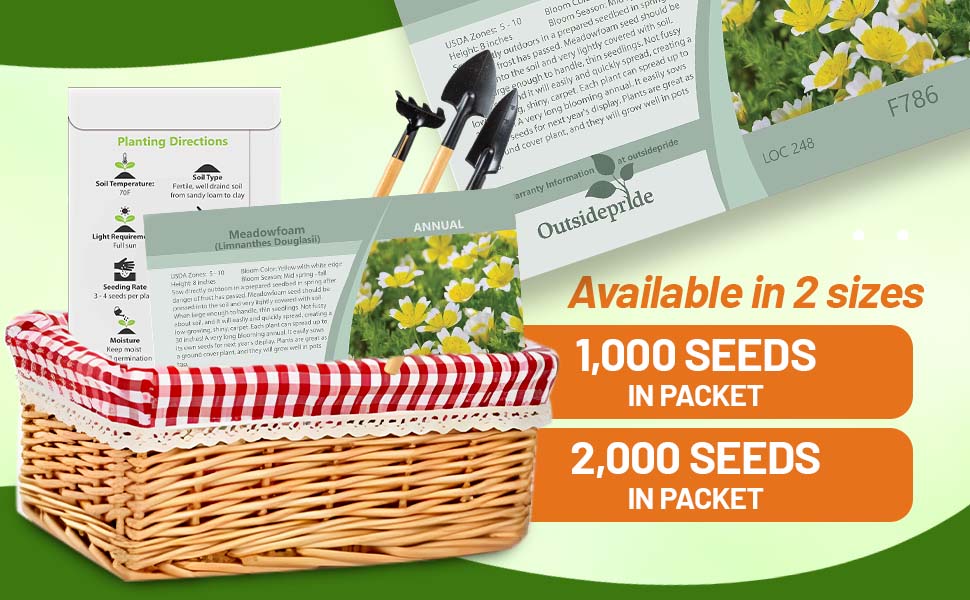
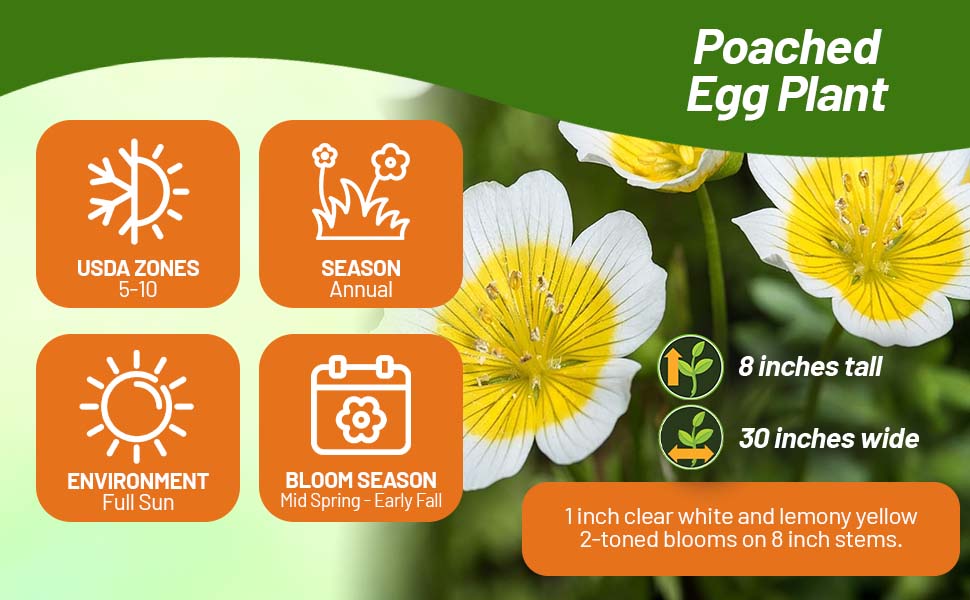
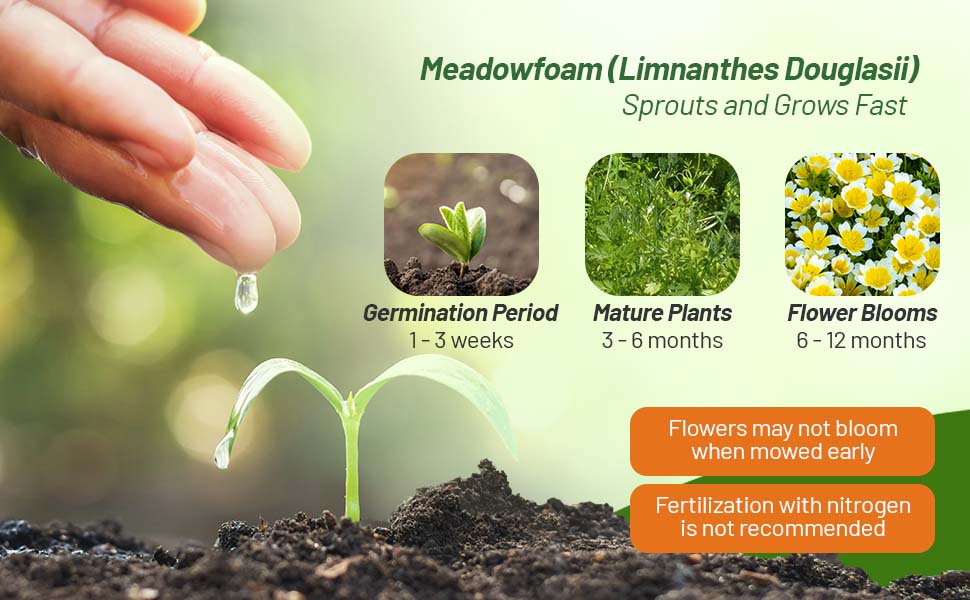
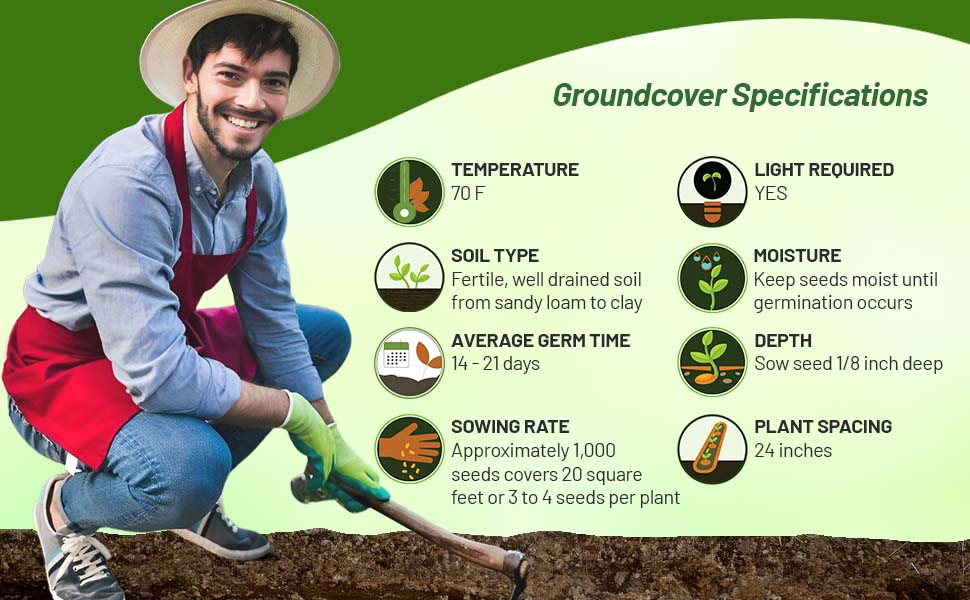
Meadowfoam (Limnanthes Douglasii) - Grow Limnanthes Douglasii seeds for this annual that is native to California. Limnanthes is commonly called Poached Egg Plant or Meadowfoam, and it is not only visually very striking and attractive, but it also has a very nice aroma as well. Limnanthes Poached Egg Plant is not fussy about soil, and it will easily and quickly spread, creating a low-growing, shiny, carpet. Each meadowfoam plant can spread up to 30 inches! Poached Egg Limnanthes is a very long blooming annual with a mass of charming, 1 inch clear white and lemony yellow 2-toned blooms on 8 inch stems. It easily sows its own flower seeds for next year's display. Meadowfoam plants are great as a ground cover plant, and they will grow well in pots too.
Sow Limnanthes Douglasii seeds directly outdoors in a prepared seedbed in spring after danger of frost has passed. Meadowfoam seed should be pressed into the soil and very lightly covered with soil. When large enough to handle, thin the Poached Egg Plant seedlings.
Common Questions
What are these flowers used for in the landscape?
These are great for beds and borders, city gardens, prairie gardens, cottage gardens and in containers.
Do these flowers attract any pollinators?
Yes, these flowers will reward your garden by attracting bees, butterflies and pollinating insects.
Do I need to prune at the end of their bloom season?
Yes, these should be pruned back after they are done flowering.
Planting Directions
TEMPERATURE
60 - 65F
AVERAGE GERM TIME
12 - 40 days
LIGHT REQUIRED
Yes
DEPTH
1/16th inch deep
SOWING RATE
2 - 3 seeds per plant
MOISTURE
Keeps seeds moist until germination
PLANT SPACING
10 - 12 inches
Purple Bell Vine (Rhodociton Atrosanguineus) - Grow Rhodociton Atrosanguineus seeds for an exotic vine that will have everyone's attention! Rhodociton Purple Bell Vine has heart-shaped leaves and dark purple bell-shaped flowers that dangle from thread-like stems. Bell Vine uses include baskets where it will cascade over the edges and look stunning or give it a trellis where it will grow with support up to 120 inches in height. Rhodociton Purple Bells needs rich, well-drained soil and full sun to partial shade although it prefers afternoon shade in hotter climates. Purple Bells bloom from late spring to late fall.
Sow Purple Bell Vine seeds indoors in late winter. Gently press the flower seeds into the soil and barely cover the seed with soil. Keep consistently moist until germination occurs. Harden the seedlings off for 10 days or more before planting outdoors. Purple Bell Vine is free-flowering and needs little care.
















